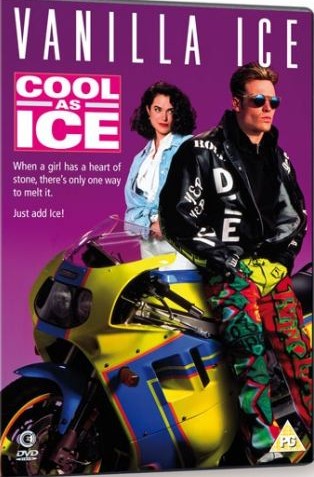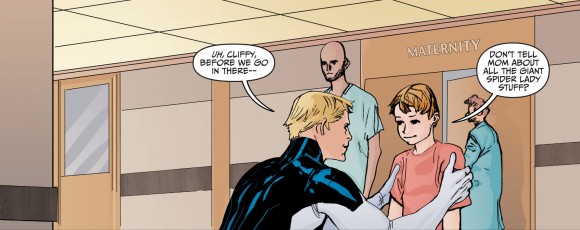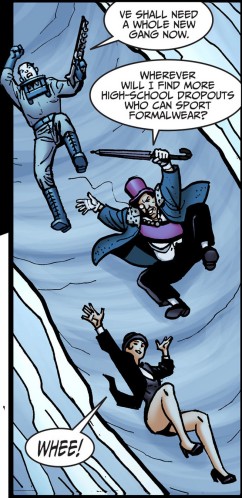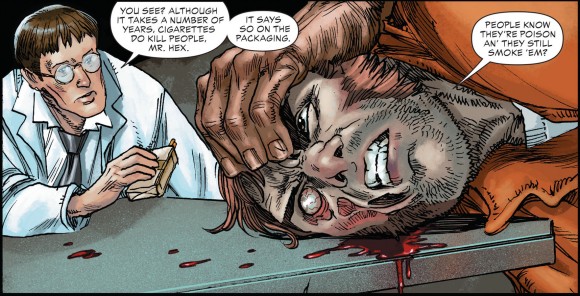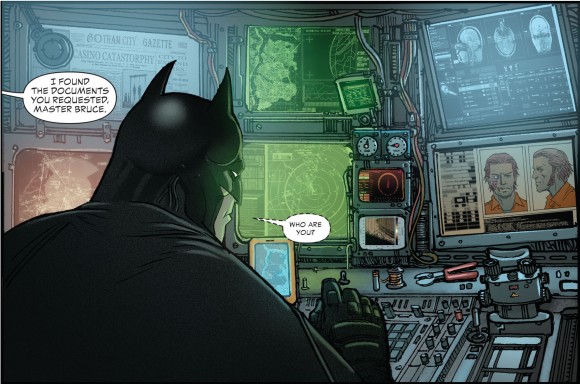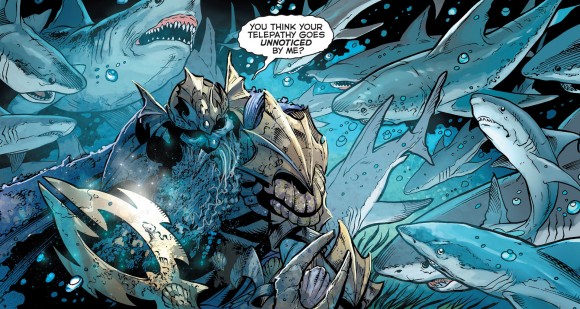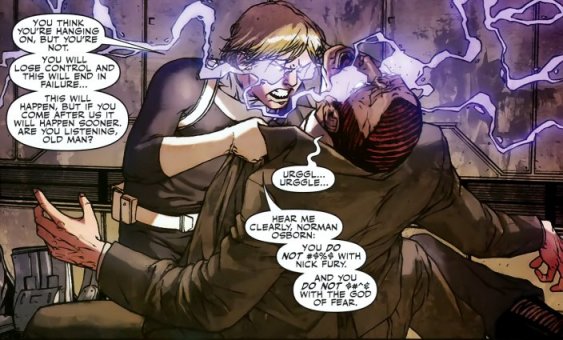I liked Tite Kubo’s Bleach a whole lot until I suddenly didn’t. Y’all know how that goes. You get into it, you give it a lot of rope to hang itself, then you get comfortable, then you let it coast a little bit, and then you realize you’ve just read 38 volumes of a comic and haven’t liked anything about these stupid Arrancars but every one of the last ten or so volumes have had exactly one REALLY GOOD chapter or scene near the end, just good enough to convince you to pick up the next volume and—enough. And then I ended up with a Weekly Shonen Jump subscription and now I get it for basically free. Life! I recommend it, though. If you like this kinda story, Bleach is the real deal for a good while.
Two things I never stopped enjoying about Bleach, though, are Kubo’s way of rendering fashionable clothes and the chapter pages. The fashion’s got obvious appeal, but it’s a bit harder to explain the appeal of the chapter pages. That sounds a little stupid to even type, mainly because the short version is “Kubo has a great sense of fashion, design, wonder, and that shows on his chapter pages, especially as the series goes on and he becomes more daring and creative with the layouts and art.” That makes sense, and I imagine you’d agree if you saw a few of them. Luckily, I happen own a lot of Bleach and I picked twelve of them that I like from the first few volumes of the series, plus the first three so you can see how soon Kubo started doing interesting things.















“Violate the Dead” is surely the result of some kind of confusion. Bleach isn’t really that type of series…
But you can see the appeal of these, I think, particularly if you’re into this kind of story. These early chapter pages are cool, but par for the course for series like this. There are cool costumes, interesting What Ifs, some good humor (I especially like numbers seven and twenty-six), and they’re honestly just very strong images. They work.
Part of the reason why they work is Kubo’s choice of titles. There’s some musical-sounding phrases like “Binda Blinda,” which is cool, and straightforward titles like “The Gate of the End,” which is also cool. Kubo does most of his chapter titles in English, and I’m always pleasantly surprised by both the poetry and quality of the titles. I love Eiichiro Oda’s One Piece and Takehiko Inoue’s Vagabond more than most comics, but they don’t have memorable chapter titles. Bleach does.
Once chapter nine hits, Kubo gets a lot more inventive, playful, and melancholy with the titles. The titles for 1-8 aren’t bad, but they aren’t full of potential like “Wasted but Wanted” or “6/17 op. 2 Doesn’t Smile Much Anymore” or “Paradise is Nowhere”/”Paradise is Now Here.” There’s a playfulness or sense of foreboding in some of these, and that carries through to the stories, too. A good title is legendary. “Valley Forge, Valley Forge.” “This Man… This Monster!” “Lonely Place of Dying.” “Tommy’s Heroes.” “First Shot, Last Call.” “Days of Future Past.” “How to Murder the Earth.” “A Game of You.” “Rake at the Gates of Hell.” “The Death Wish of Terrible Turpin.” “The Great Cow Race.” “Anything Done for the First Time Creates a Demon.” (I asked friends for some memorable names so this list wasn’t just my own, and now we are off at the races naming great titles, even the ones with so-so stories. Could do a post on those alone, easy. Comics!)
Here’s a few more chapter pages, but from volumes 34-38, and then later still in the series, from middle/late 2012 through middle 2013 Weekly Shonen Jump.










The first thing to notice is that the covers in a pin-up style have gotten better. Kubo’s a pretty talented artist, and it’s cool to see the leaps in quality that he made over the years. The characters feel rounder, his storytelling choices are more confident, and there’s a sense that Kubo wants to push the limit of the chapter page.
It’s not obvious here, because these chapter pages are stripped almost entirely of context, outside of a loose chronological progression (the negative numbers are flashback chapters). You don’t know where the pages fall in the chapter, what the story’s about, or anything like that. But what makes so many of these chapter pages so great is that Kubo treats them as a cold open rather than anything dedicated to purely saying “This is chapter three hundred and eight-six of Bleach, a comic series by Tite Kubo.”
The chapter pages hit at the end of scenes, on the last page of the chapter, two pages before the chapter, and pretty much anywhere, including occasionally the first page. Instead of using them like American comics use recap/credit pages, Kubo uses them as just another storytelling device. It’s like watching a tense scene in Breaking Bad and feeling yourself surprised by the fact that you unconsciously exhaled as soon as that music twanged up, or feeling that split-second of dead air before Justified‘s theme kicks in.




It’s a mood-building breather, and it’s something that is rare in my comics-reading experience. Story titles are often included in comics often as a matter of fact, something to sit atop the credits and define the arc. It’s cool when they’re worked into the art, but they never actually feel like part of the story. They’re just an accessory, if that metaphor makes sense. But when the chapter pages, and titles, are used like this, it really, really adds to the story.
I can see how people would think it’s wasteful, since comics only get a few pages. But Kubo is spending one or two pages telling several pages worth of mood. It helps. It’s an enhancement.

I read a lot of comic books. Part of what keeps me coming back to the comic book as a format, be it stapled or glued or digital-only, is seeing fresh things like this, things no other medium could really do properly. I like to be surprised and entertained, and even when Bleach is busy disappointing me, I know that Kubo’s got something up his sleeve that makes checking in on Bleach worth it, almost every single time. Weekly Shonen Jump makes that easy, of course, but even when I was binging and not particularly enjoying it, this held true.
You can get Bleach and Weekly Shonen Jump on your tablet or computer monitor of your choice. Five bucks a volume makes it easy to dive in, and honestly, the early stuff is really good, and there’s flashes of great moments throughout. But when the quality of the writing declines, the art stays strong and gets stronger. The chapter pages are just one manifestation of that.





